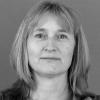Senior researcher Infectious Diseases in Primary Care, surveillance
Publicatie
Publication date
The global epidemiology of RSV in community and hospitalized care: findings from 15 countries.
Staadegaard, L., Caini, S., Wangchuk, S., Thapa, B., Aparecida Ferreira de Ameida, W., Cotrim de Carvalho, F., Njouom, R., Fasce, R.A., Bustos, P., Kyncl, J., Novakova, L., Bruno Caicedo, A., de Mora Coloma, D.J., Meijer, A., Hooiveld, M., Huang, S., Wood, T., Guiomar, R., Rodrigues, A.P., Danilenko, D., Stolyarov, K., Jian Ming Lee, V., Wei Ang, L., Cohen, C., Moyes, J., Larrauri, A., Delgado-Sanz, C., Quynh Le, M., Vu Mai Hoang, P., Demont, C., Bangert, M., Summeren, J. van, Dückers, M., Paget, J. The global epidemiology of RSV in community and hospitalized care: findings from 15 countries. Open Forum Infectious Diseases: 2021, 8(7), p. ofab159.
Read online
Background
Respiratory syncytial virus (RSV) is one of the leading causes of acute respiratory tract infections. To optimize control strategies, a better understanding of the global epidemiology of RSV is critical. To this end, we initiated the Global Epidemiology of RSV in Hospitalized and Community care study (GERi).
Methods
Focal points from 44 countries were approached to join GERi and share detailed RSV surveillance data. Countries completed a questionnaire on the characteristics of their surveillance system.
Results
Fifteen countries provided granular surveillance data and information on their surveillance system. A median of 1,641 (IQR:552 – 2,415) RSV cases per season were reported from 2000 and 2020. The majority (55%) of RSV cases occurred in the <1-year-olds, with 8% of cases reported in those aged ≥65 years. Hospitalized cases were younger than those in community care. We found no age difference between RSV subtypes and no clear pattern of dominant subtypes.
Conclusions
The high number of cases in the <1 year-olds indicates a need to focus prevention efforts in this group. The minimal differences between RSV subtypes and their co-circulation implies prevention needs to target both subtypes. Importantly, there appears to be a lack of RSV surveillance data in the elderly.
Respiratory syncytial virus (RSV) is one of the leading causes of acute respiratory tract infections. To optimize control strategies, a better understanding of the global epidemiology of RSV is critical. To this end, we initiated the Global Epidemiology of RSV in Hospitalized and Community care study (GERi).
Methods
Focal points from 44 countries were approached to join GERi and share detailed RSV surveillance data. Countries completed a questionnaire on the characteristics of their surveillance system.
Results
Fifteen countries provided granular surveillance data and information on their surveillance system. A median of 1,641 (IQR:552 – 2,415) RSV cases per season were reported from 2000 and 2020. The majority (55%) of RSV cases occurred in the <1-year-olds, with 8% of cases reported in those aged ≥65 years. Hospitalized cases were younger than those in community care. We found no age difference between RSV subtypes and no clear pattern of dominant subtypes.
Conclusions
The high number of cases in the <1 year-olds indicates a need to focus prevention efforts in this group. The minimal differences between RSV subtypes and their co-circulation implies prevention needs to target both subtypes. Importantly, there appears to be a lack of RSV surveillance data in the elderly.
Background
Respiratory syncytial virus (RSV) is one of the leading causes of acute respiratory tract infections. To optimize control strategies, a better understanding of the global epidemiology of RSV is critical. To this end, we initiated the Global Epidemiology of RSV in Hospitalized and Community care study (GERi).
Methods
Focal points from 44 countries were approached to join GERi and share detailed RSV surveillance data. Countries completed a questionnaire on the characteristics of their surveillance system.
Results
Fifteen countries provided granular surveillance data and information on their surveillance system. A median of 1,641 (IQR:552 – 2,415) RSV cases per season were reported from 2000 and 2020. The majority (55%) of RSV cases occurred in the <1-year-olds, with 8% of cases reported in those aged ≥65 years. Hospitalized cases were younger than those in community care. We found no age difference between RSV subtypes and no clear pattern of dominant subtypes.
Conclusions
The high number of cases in the <1 year-olds indicates a need to focus prevention efforts in this group. The minimal differences between RSV subtypes and their co-circulation implies prevention needs to target both subtypes. Importantly, there appears to be a lack of RSV surveillance data in the elderly.
Respiratory syncytial virus (RSV) is one of the leading causes of acute respiratory tract infections. To optimize control strategies, a better understanding of the global epidemiology of RSV is critical. To this end, we initiated the Global Epidemiology of RSV in Hospitalized and Community care study (GERi).
Methods
Focal points from 44 countries were approached to join GERi and share detailed RSV surveillance data. Countries completed a questionnaire on the characteristics of their surveillance system.
Results
Fifteen countries provided granular surveillance data and information on their surveillance system. A median of 1,641 (IQR:552 – 2,415) RSV cases per season were reported from 2000 and 2020. The majority (55%) of RSV cases occurred in the <1-year-olds, with 8% of cases reported in those aged ≥65 years. Hospitalized cases were younger than those in community care. We found no age difference between RSV subtypes and no clear pattern of dominant subtypes.
Conclusions
The high number of cases in the <1 year-olds indicates a need to focus prevention efforts in this group. The minimal differences between RSV subtypes and their co-circulation implies prevention needs to target both subtypes. Importantly, there appears to be a lack of RSV surveillance data in the elderly.
Gegevensverzameling



